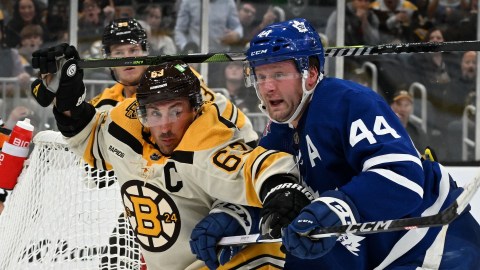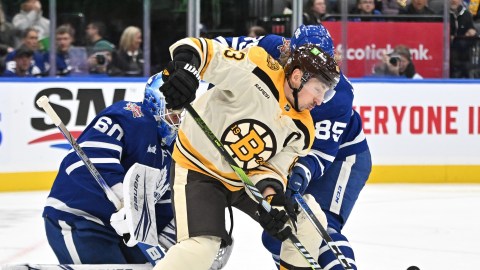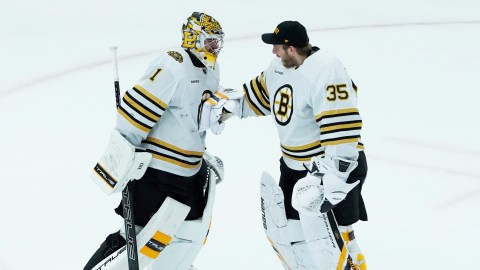The NHL general managers meetings wrapped up Wednesday down in Boca Raton, Fla.
As in most years, the game’s power brokers came to the conference with plenty of ideas for potential rule changes and tweaks to the game, but few of those ideas will be implemented — at least not in the immediate future.
That’s a good thing. The game has been tinkered with enough.
While there’s always room for improvement, especially in the area of player safety, the game has undergone enough of an overhaul in recent years. There’s no need to overreact to every potential trend and further mess with a great sport.
The one recommendation that did come out of the meetings was a call to adopt a hybrid icing system. That concept has been the subject of discussion for a number of years, and this year, it finally gained enough support to be passed on to the competition committee in June.
The basic concept is to eliminate the need for defensemen to touch the puck behind the goal line for an icing call in an effort to reduce the risk of injuries from crashes into the boards on those high-speed races to reach the puck first. Instead, the lineman will decide whether to blow a play dead for icing or wave off icing based on the positioning of the players when the puck reaches the faceoff circle. If an attacking player is in position to reach the puck first at that point, no icing will be called. If the defender is back first, the play will be blown dead.
While I’ve long supported keeping the touch-up icing rule as it is because that is one of the few plays in sports that rewards true hustle, and the race for the puck, while rare, can be extremely exciting and lead to offensive opportunities. But this compromise keeps some semblance of that race alive, leaving open the opportunity for a momentum-changing hustle play, while reducing the risk of injury by moving the finish line out from the end boards.
“We have to work through some of the technical issues, but the overall impact of the rule should be positive,” Toronto GM Brian Burke told NHL.com.
There are still plenty of details to be worked out, but if Burke and his newest arch-nemesis, Hockey Night in Canada commentator Don Cherry, who has crusaded against touch-up icing for years, can find common ground on an issue, it’s must be worth pursuing.
That change will still have to be approved by the competition committee and then the board of governors, but it stands a solid chance of being implemented next season.
The same can’t be said for the other proposals discussed this week at the GMs meetings. And that’s a good thing.
A push to restore the red line to eliminate two-line passes may have eliminated a small number of injuries, but the league can’t afford to backtrack on speed and excitement created by opening up the game with the rule changes coming out of the lockout.
The NHL also can’t afford to turn the game back into a non-stop special-teams contest. While some have bemoaned the fact that power-play chances have decreased from an average of 11 per game in the first season after the lockout to just 6.8 per game this year, that should be seen as a positive trend. Playing more than a third of the game on special teams is no way to build excitement, and it robs the game of any flow.
Vancouver general manager Mike Gillis, in between peremptory complaints about the way the game may be called in the payoffs, proposed making hand passes in the defensive zone illegal and subject to a two-minute minor penalty. Hand passes are not allowed outside of the defensive zone, but violations are punished simply by blowing the play dead for a faceoff outside the attacking zone. Applying the same restriction everywhere on the ice could be an idea worthy of consideration, but coming up with another excuse to call more penalties and have less even-strength time is the last thing the NHL needs.
Scoring has declined in recent seasons after the initial uptick following the lockout. But more penalties aren’t the answer. Additional power plays may produce more goals, but scoring alone isn’t what makes hockey exciting. It’s the blend of skill, speed and physical play that makes it the great game that it is.
The scales have already been tipped too far toward the finesse side. The real entertainment comes when those goals are interspersed with big hits, highlight-reel saves and the occasional scrap to bring fans out of their seats.
Every year, the constant tinkering with the rules seems to bring less and less physical play, without even adding the additional scoring so sought after. So at least this year, fans can take some solace that the GMs won’t be pushing for even more major changes.
Have a question for Douglas Flynn? Send it to him via Twitter at @douglasflynn or send it here. He will pick a few questions to answer every week for his mailbag.



